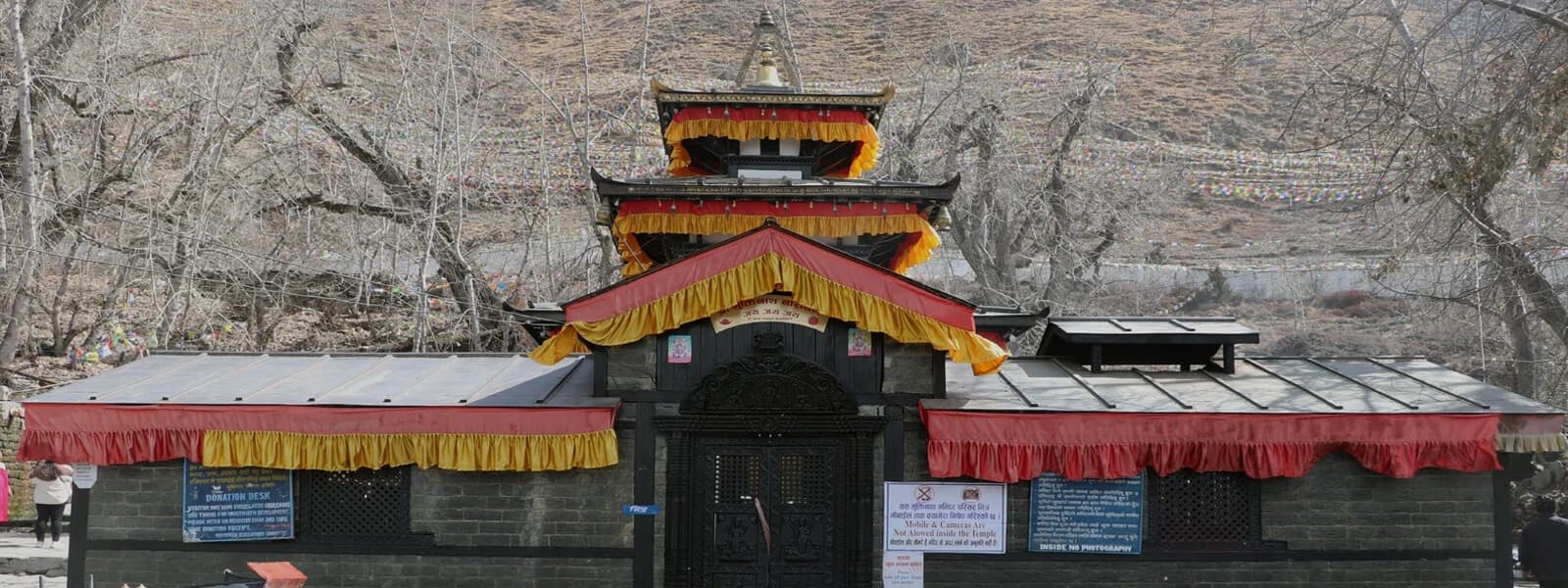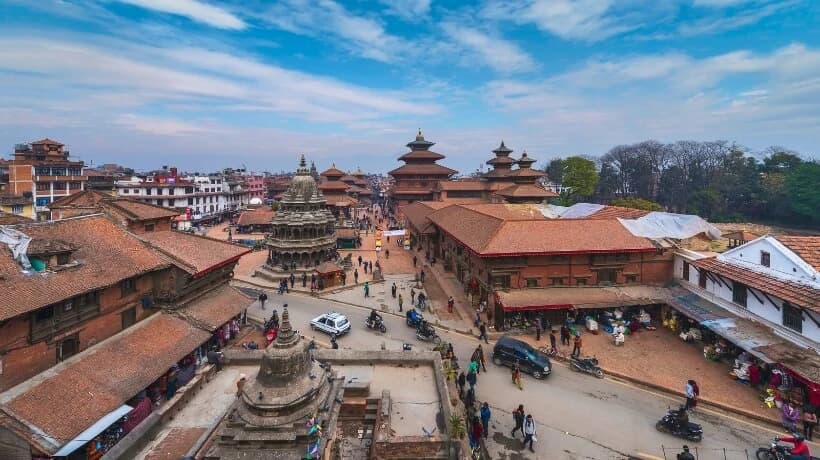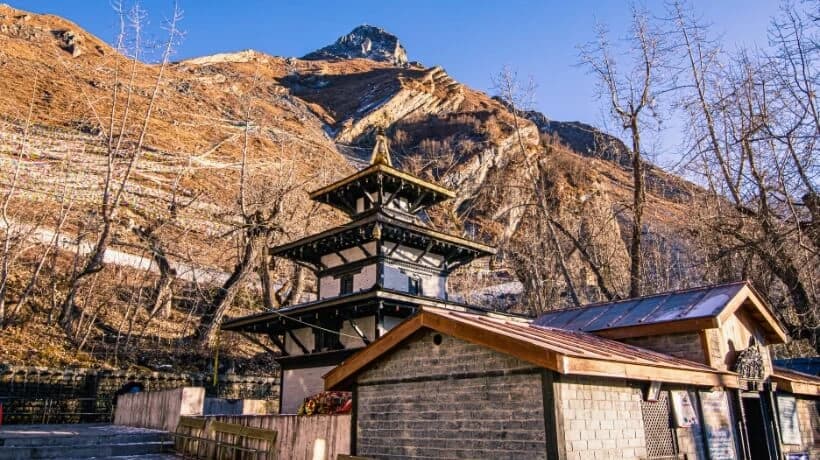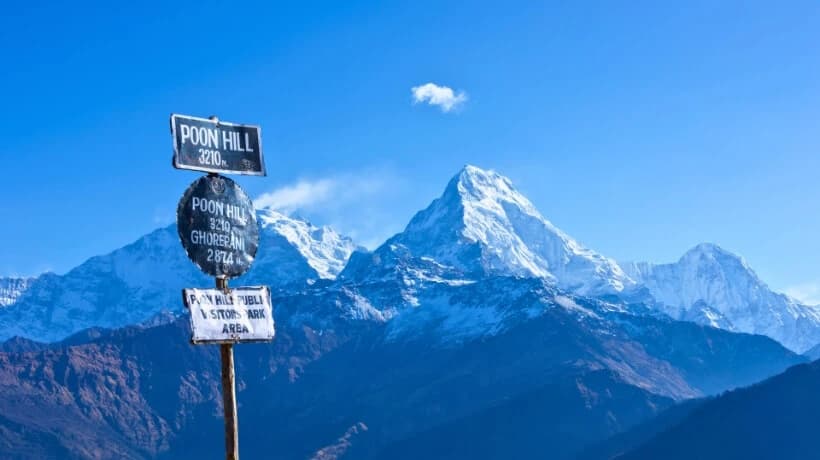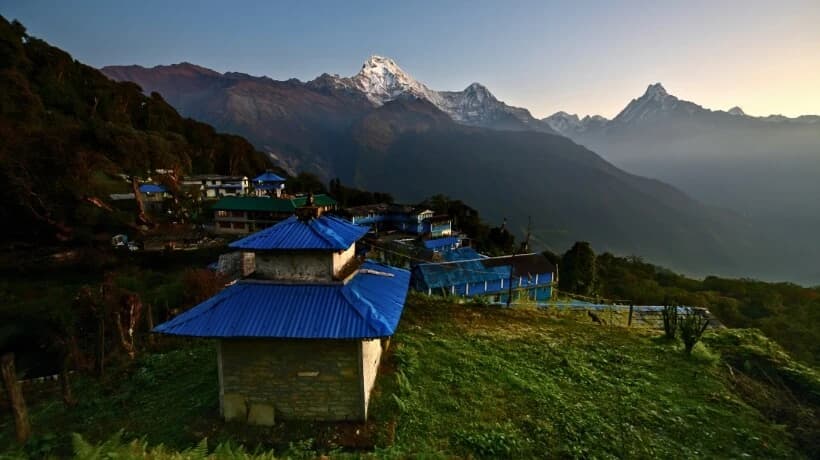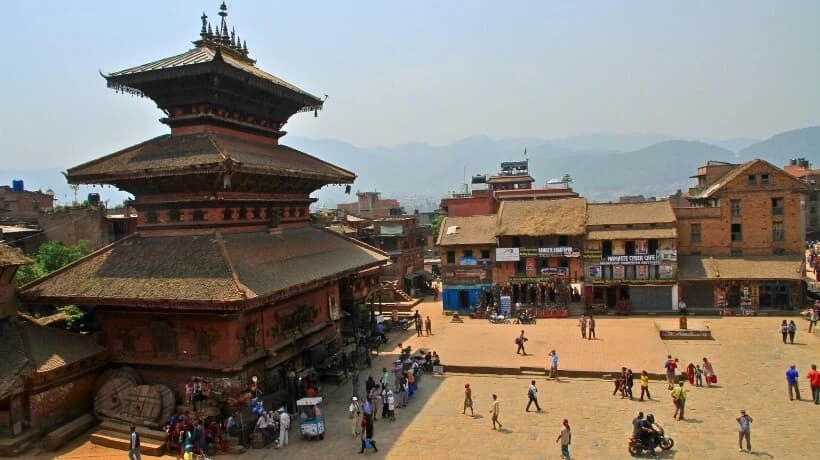Muktinath—Meditation Trekking is all about transforming human conscience into consciousness. The site has such environment that pulls you towards meditation hitting your energy level. It is a place where for the first time in life you breathe consciously and this will pave further way towards meditation.
The environment of this place prepares ground to you so that you can enter within you. The boundary, understanding and the principles of all religions disappear here because at this place you realize that awakening is the end goal of human being and it can be attained by following any discipline of religion. Probably, for the first time, here you realize that religion is the tool to consciousness not the end. The word Muktinath is made up of two words ‘Mukti’ and ‘Nath’. Mukti refers to Mokahya or Liberation and Nath means Lord. Hence, the literal meaning of Muktinath is Lord of Liberation. It is believed that a sight of Muktinath will free you from the chain of birth and death forever.
Lord Vishnu is worshipped at the temple of Muktinath. The other interesting side of this destination is that it is a confluence of two main religions of the world—Hindu and Buddhist. Lord Vishnu is the god worshipped by Hindu but the Vishnu at Muktinath is worshipped by a Buddhist Monk. And, this is happening since the time of yore. The monk follows old rituals of Buddhism while worshipping at Muktinath Temple. Chuming Gyatsa is the local name of Muktinath.
This practice shows that there exists social harmony between Hindu and Buddhist of the place. They follow different rituals to worship Muktinath but they have respect for each other.
Muktinath lies at an altitude of 3,750m from sea level. Large number of seekers of both the religions visits here every year. Hindu believes that Lord Vishnu is found in the form of Shaligram (Ammonite) in the riverbed of Kali Gandaki. Similarly, Buddhist believes that Muktinath is the home for many Dakinis and 21 Taras (female deities). Muktinath is regarded as one of the 24th Tantric places by Buddhist. It (Tantric) is one of the methods of performing rituals.
Highlights
- UNESCO heritage sites: Kathmandu Durbar Square, Boudhanath, and Pashupatinath.
- Hiking through Kali Gandaki Gorge
- Muktinath: Pagoda-style Hindu temple, 108 spots, Jwala Mai temple, Dhola Mebaar Gompa.
- Saligrams: a valuable stone representing Lord Vishnu
- Himalayan ranges: Annapurna mountain range, Dhaulagiri, and Nilgiri
- Homestay in Ghandruk
- Poonhill, a famous viewpoint


